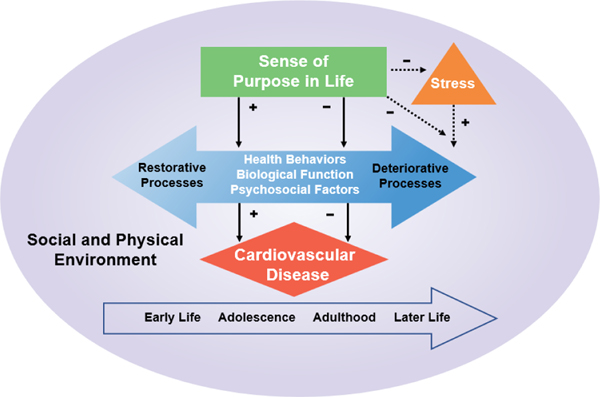Fig. 1.
This model suggests that a sense of purpose might influence CVD risk through three biobehavioral pathways: (1) enhancement of other psychological and social resources that buffer against the cardiotoxic effects of overwhelming stress; (2) indirect effects through health behaviors; and (3) direct effects on biological pathways. The model recognizes that all of these processes unfold over the life course and are influenced by our social (e.g., social determinants of health) and physical environments. +, positive relationships; −, inverse/negative relationships. Adapted from Kubzansky et al. [3]

